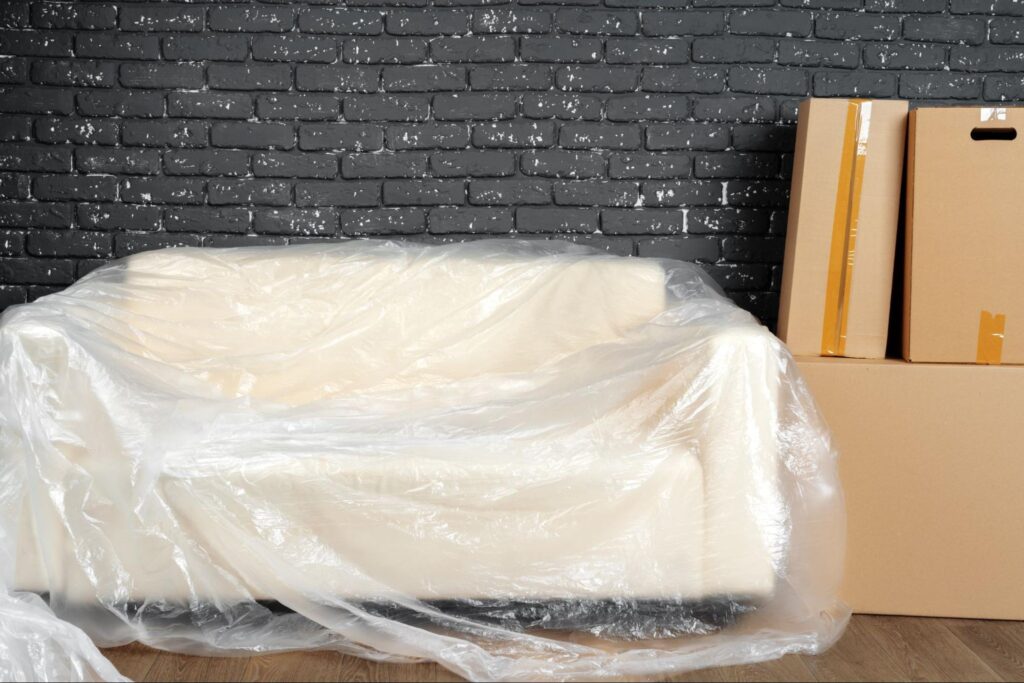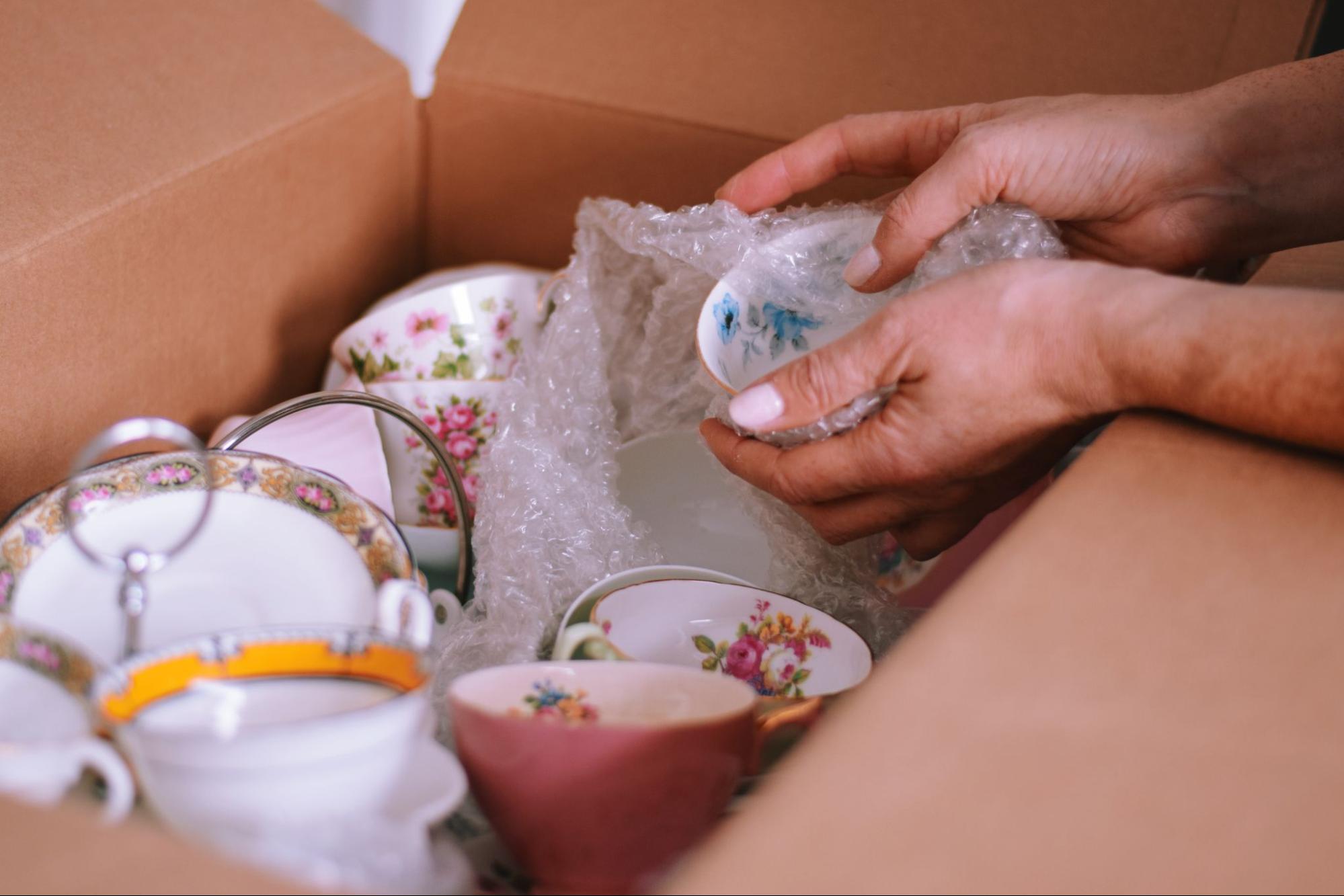Ever seen an old cartoon with someone trying to move a piano into a second-story window with ropes and pulleys? Or a skit where a character falls while moving large items (like a painting) and ends up with their face sticking through the Mona Lisa? It’s funny for cartoons, but it’s not something you want to happen during your move! Whether it’s an heirloom grandfather clock or your family dinner table, you want to make sure your items arrive safe and secure. Specialty moving services (from piano moving to packing delicate items like artwork) make sure your move doesn’t end up as a comedy of errors.
At Scobey Moving & Storage, we understand that moving belongings from point A to point B requires the right techniques, equipment, and valuation coverage. If you’re moving large, heavy, or delicate items, we’d like to share some tips to protect your belongings and help make your move as seamless and low-stress as possible.
Challenges of Moving Large Items or Moving Fragile Items
The process of moving large and fragile items isn’t just a physical challenge — it’s also a logistical one! Without the right training and tools, there’s a real risk of damage or injury. The mover needs to navigate tight spaces, protect delicate surfaces, and make sure both the items (and the people handling those items!) stay safe. This takes proper planning, technique, and equipment (no ropes pulling pianos up to second-story windows, okay?). Here are some ways to prep and pack your items safely.

Preparing Large Items for a Move
First, let’s talk about moving large, bulky items like furniture. Not all large items need the same treatment. For example, moving large, delicate items (like piano moving) is more complicated than moving a couch. To get more specific guidance, you can always contact a specialty moving services company (like Scobey) for info about moving specific items.
Disassembling Furniture and Securing Loose Parts
One of the first steps in moving large items is to see if they can be disassembled. Often, there are parts that can be safely unscrewed, disconnected, or taken off to make the item smaller. It’s much easier to transport smaller items, and it also lessens the risk of damage.
Start by identifying which parts of an item can be safely removed.
Does your couch have removable feet?
Are there removable leaves in your table?
Can your bookshelf be taken apart?
Use tools to carefully take apart tables, bed frames, or modular sofas. Keep all screws, bolts, and small components in clearly labeled bags or containers, and tape these to the underside of the furniture or place them in a designated parts box. You might even take pictures or a video on your phone while you’re disassembling. All this can make reassembly easier when you get to your new home.
Moving Fragile Items: Using Padding and Wrapping To Protect Surfaces
Without the right precautions, items can get scratched or damaged during a move. When you’re packing delicate items or protecting delicate surfaces, use high-quality padding, like a moving blanket. These blankets are perfect for keeping wood and upholstered surfaces from getting scratched or dented.
Make sure that you secure blankets with packing tape or stretch wrap so that no part of the item is exposed. Use specialized glass covers or heavy-duty bubble wrap for glass tabletops or mirrors to prevent cracks or breaks.
Handling Heavy Appliances With Dollies and Straps
If you’re moving large items that are heavy (like refrigerators, washing machines, or stoves), it’s very important to use the right equipment and techniques. An appliance dolly with straps to secure the load can help prevent tipping. And it’s vital to have proper technique when moving heavy items. The saying “lift with your legs, not your back” holds true, but professional specialty moving services have the training to make sure everyone stays safe.
It’s often possible to “lighten the load” by removing any detachable parts (like refrigerator shelves or washing machine hoses) and transporting them separately. Professional movers (like Scobey) know how many people are needed to move heavy items and how to navigate challenges like stairs or tight spaces.

Moving Fragile Items Safely
Like moving large items, transporting and packing delicate items can also be a challenge. But with the right tools and expertise, you can feel secure that your belongings will arrive at your new home safely.
Packing Fragile Items Securely
Fragile items (including glassware, ceramics, and electronics) require careful packing. Here are some tips for packing fragile items like a pro:
- Choose a sturdy box that’s the right size. You want a box small enough to keep items from moving but not so small that it causes pressure.
- Cushion the bottom of the box with bubble wrap or crumpled paper.
- Individually wrap each item, paying special attention to parts that stick out (like handles or spouts).
- For electronics, use anti-static bubble wrap. If it’s possible, use the original packaging for optimal protection.

Use of Bubble Wrap, Packing Peanuts, and Specialty Boxes
When you’re moving fragile items, bubble wrap and packing peanuts are your best friends. Wrap each item generously with bubble wrap, and use tape for a secure fit.
Fill any voids in the box with packing peanuts or crumpled paper so that items don’t shift, and make sure to choose durable moving boxes. When moving breakables like stemware or dishes, there are specialty boxes with dividers that keep items separated and safe.
Labeling Boxes for Careful Handling
Whether you’re moving large items or small ones, make sure to clearly label boxes. This is especially important for boxes holding fragile items. This helps everyone know that the box should be handled with care. Use bold markers to write “FRAGILE” and arrows to show which side to keep upright. It’s also helpful to list the contents on the box. Listing the contents (or color coding the box) lets movers know which room to put the box in. This is a handy way to make moving in easier!
Special Considerations for Artwork and Antiques
Packing delicate items like artwork or valuable antiques requires some extra care. Hiring specialty moving services can help you make sure these treasures stay safe during your move.
Preparing Artwork With Corner Protectors and Specialty Crates
Whether your artwork is a family portrait or a costly painting, it’s important to take the proper precautions. Moving fragile items like artwork? Here are some ways to protect these belongings:
- Use corner protectors to safeguard frames from dings and dents.
- When you’re moving large items of high-value, consider getting a custom-built crate that provides a snug fit and prevents movement. A professional moving company (like Scobey) can help with this.
- Wrap the artwork in acid-free paper to protect the surface.
- Line the artwork’s crate with foam or soft padding.
- Make sure that you have the right valuation coverage or mover’s insurance on high-value items. It’s very important to understand what’s covered and to read the fine print.
Handling and Packing Valuable Antiques With Extreme Care
Due to their age and often unique construction, antiques require a delicate touch. When you’re packing delicate items, make sure to wrap these belongings in soft packing materials (like foam or quilts).
For particularly intricate or fragile antiques, consider talking with a specialty moving service to make sure these items are protected. Document the condition of each piece before it’s packed. This makes sure a record exists in the unlikely event of damage.

Tips for Hiring Professional Help
Situations Where a Specialty Mover Might Be Needed
Moving large items like pianos, hot tubs, or large sculptures requires specialized expertise. Specialty movers have the training and equipment to handle these complex moves safely. Engaging these professionals can prevent damage and ensure that your items are transported securely and efficiently.
Verifying Insurance Coverage for High-Value Items
When hiring a professional mover or specialty moving services, it’s vital to make sure they’ve got the right coverage for the job (especially when they’re moving fragile items of high-value). This gives you peace of mind knowing that your belongings are protected. And in the rare event of damage, you’ll be covered. Discuss your coverage options with your moving partner. A great mover can help you get the right level of protection for your specific items and move.
Making Sure Your Move Is Safe and Secure

Moving large or fragile items safely involves a blend of careful preparation, the correct techniques, and the right equipment. We hope these tips and strategies give you the info you need to protect your valuable or delicate items throughout the moving process. And remember, a professional mover can make sure your move is as smooth and stress-free as possible. Here at Scobey Moving & Storage, we’ve got over a century of experience moving large items, fragile items, and everything in between! We’d love to make your next move a success.






